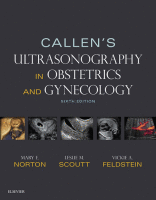Physical Address
304 North Cardinal St.
Dorchester Center, MA 02124

Summary of Key Points Transvaginal ultrasound (TVU) for cervical assessment is one of the best techniques for predicting preterm birth (PTB). A cervical length (CL) of less than 25 mm between 16 and 24 weeks' gestation is the most reliable threshold…

Summary Key Points Diagnosis of hydrops fetalis requires two or more of the following sonographic abnormalities: scalp and body wall edema (defined as skin thickness >5 mm), ascites, pleural effusion, pericardial effusion, polyhydramnios, and placental thickening (≥4 cm in the second trimester…

Summary of Key Points Congenital anomalies can occur in isolation or be indicative of a more extensive underlying process. The presence of a congenital anomaly should prompt a thorough evaluation for other anomalies and consideration of additional advanced fetal imaging.…

Summary of Key Points Normal renal function is fully established by the 9th week of gestation. It is preferable to describe the findings in the fetal renal pelvis, calyces, ureter, and bladder in cases of urinary tract dilation, rather than…

Summary of Key Points Detection of gastrointestinal tract obstruction is often difficult. Duodenal and small intestinal obstructions are easily visualized, but usually not until the third trimester, whereas esophageal atresia and anal atresia may be difficult to detect at any…

Summary of Key Points Prenatal diagnosis of congenital heart disease (CHD) can reduce morbidity and mortality rates by means of delivery and intervention planning. With the proper technology and skill, some forms of fetal cardiac disease can be detected using…

Summary of Key Points The most common chest masses are congenital pulmonary airway malformations (CPAMs) and congenital diaphragmatic hernias (CDHs). For both, the displacement of the heart from its normal position is the most commonly recognized ultrasound finding. CPAMs are…

Summary of Key Points The prevalence of skeletal dysplasias is about 2.4/10,000 births, and 9.1/1000 among perinatal deaths; the most common anomalies are thanatophoric dysplasia, achondroplasia, osteogenesis imperfecta, and achondrogenesis. The new edition of Nosology and Classification of Genetic Skeletal…

Summary of Key Points The diagnosis of a typical orofacial cleft involving the palate can be suspected as early as the first trimester by the presence of an anechoic space or discontinuity in the retronasal triangle (RNT) view. Using two-dimensional…

Summary of Key Points Central nervous system (CNS) anomalies are among the most frequent malformations encountered by antenatal sonography. Ultrasound allows detection of a large proportion of all CNS malformations in early gestation. However, in some cases the findings may…